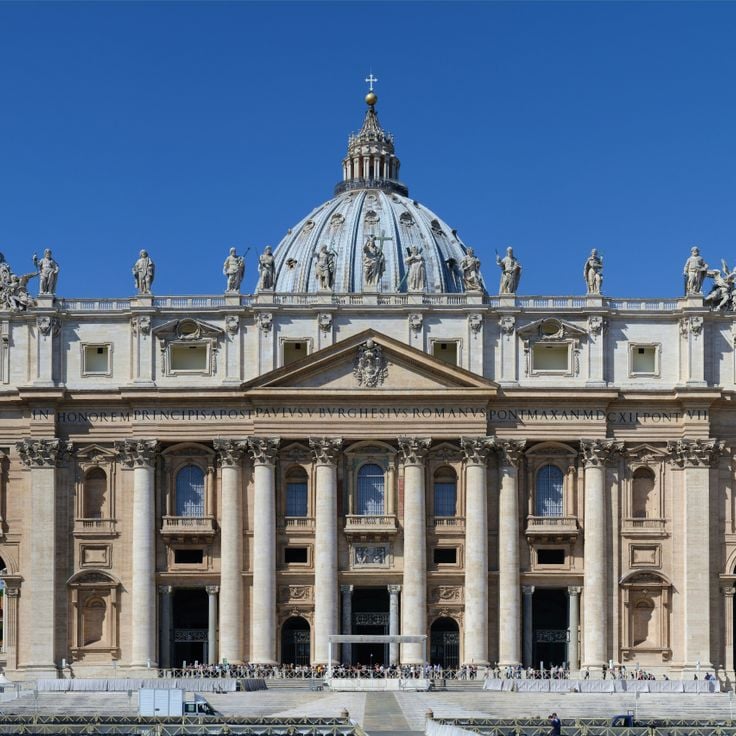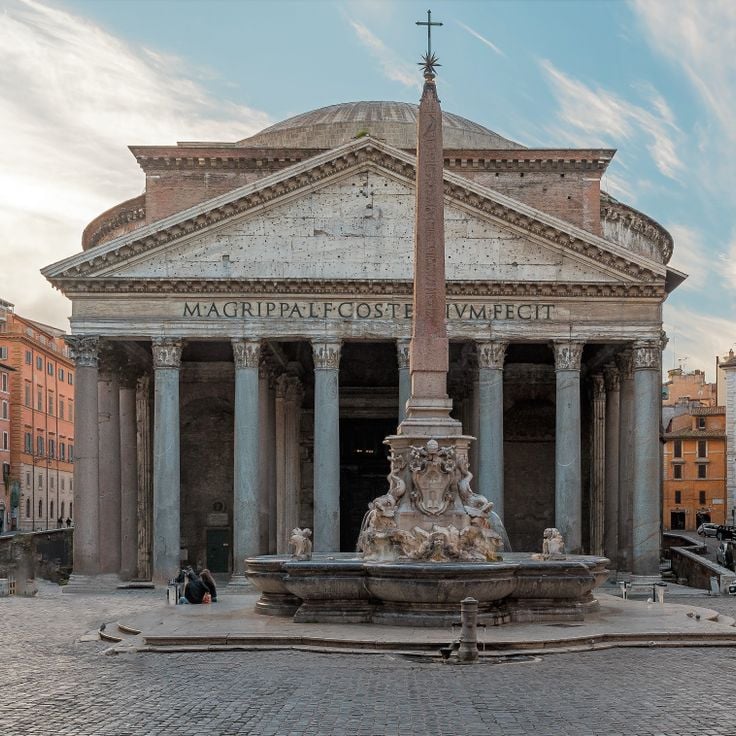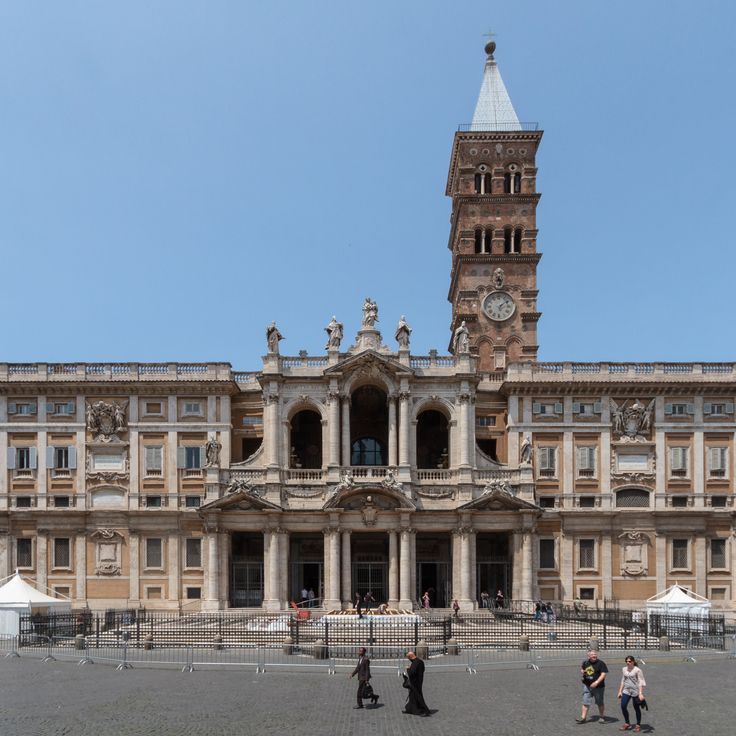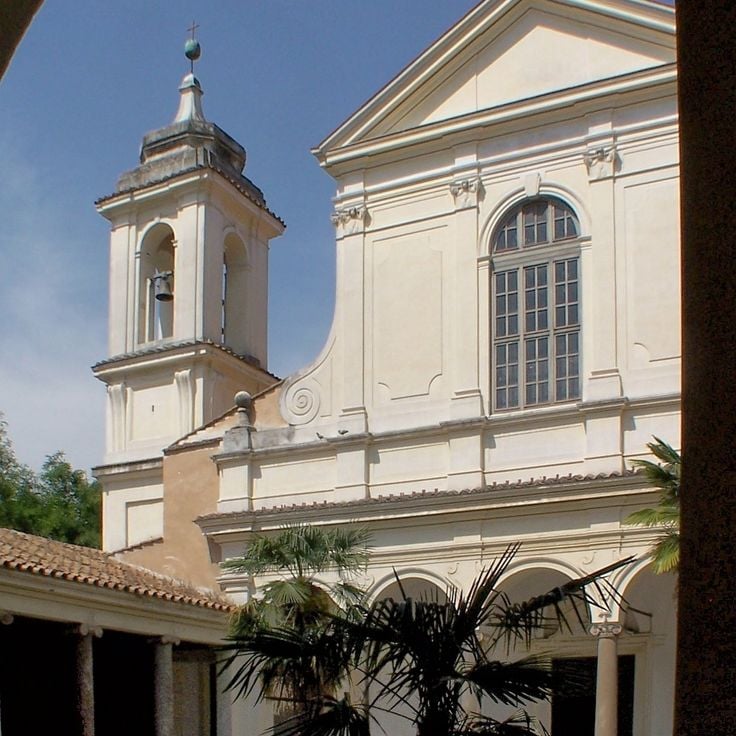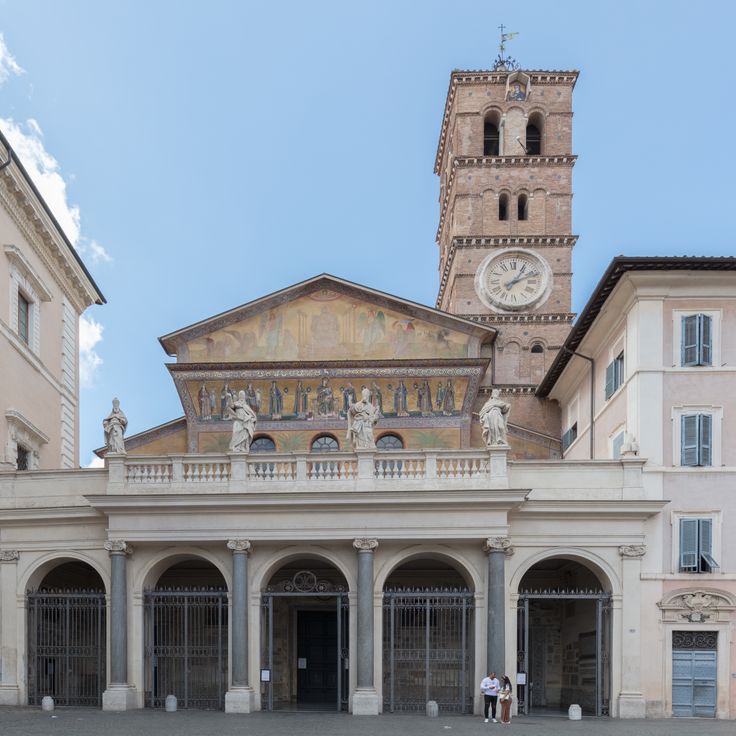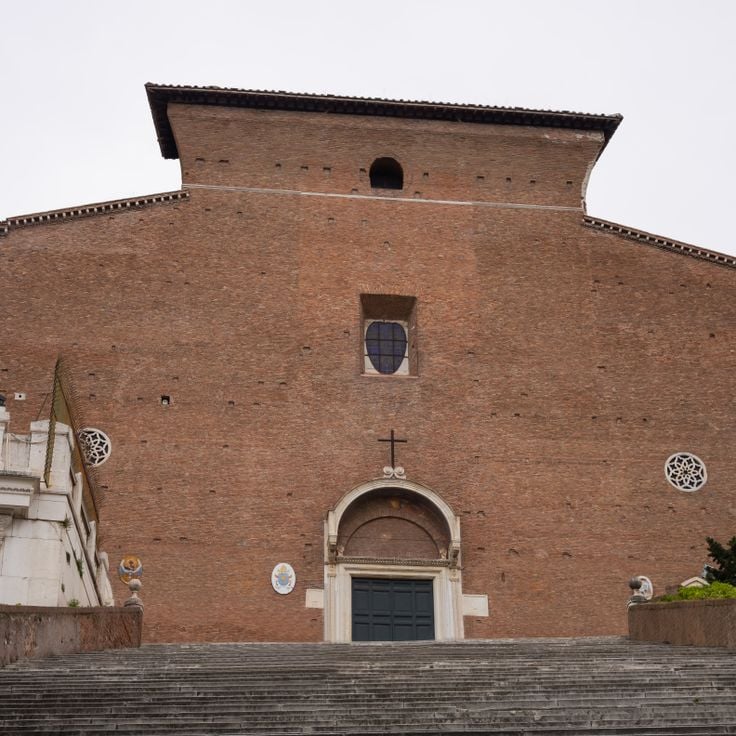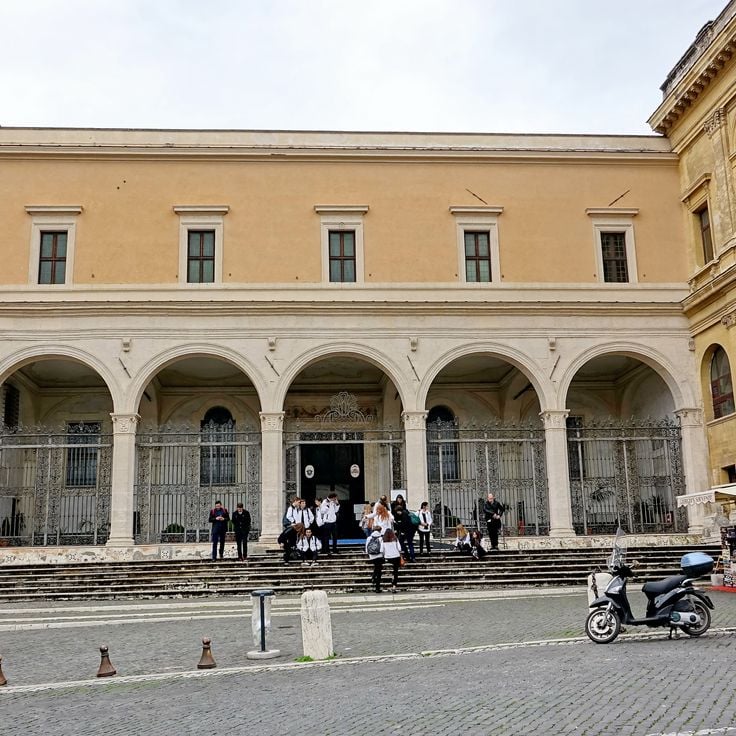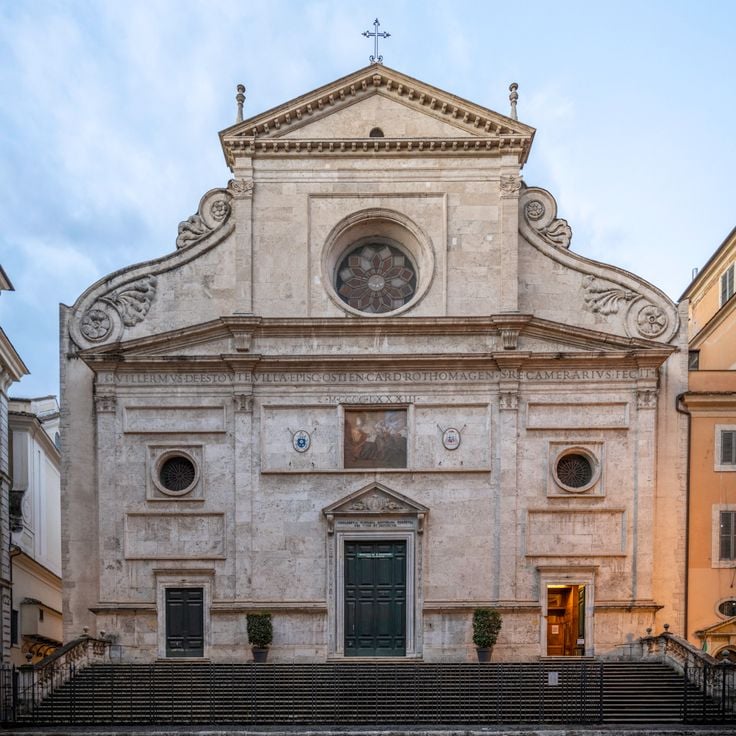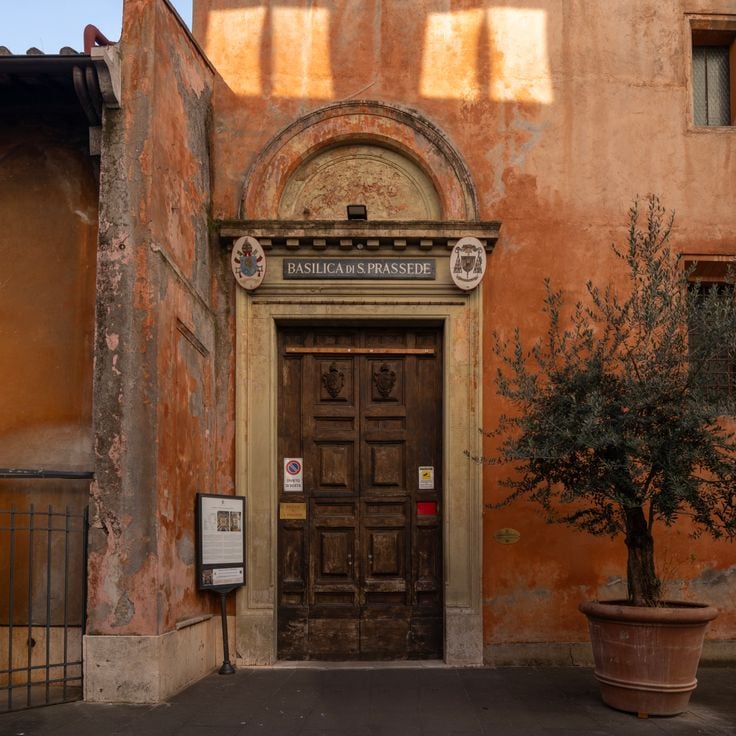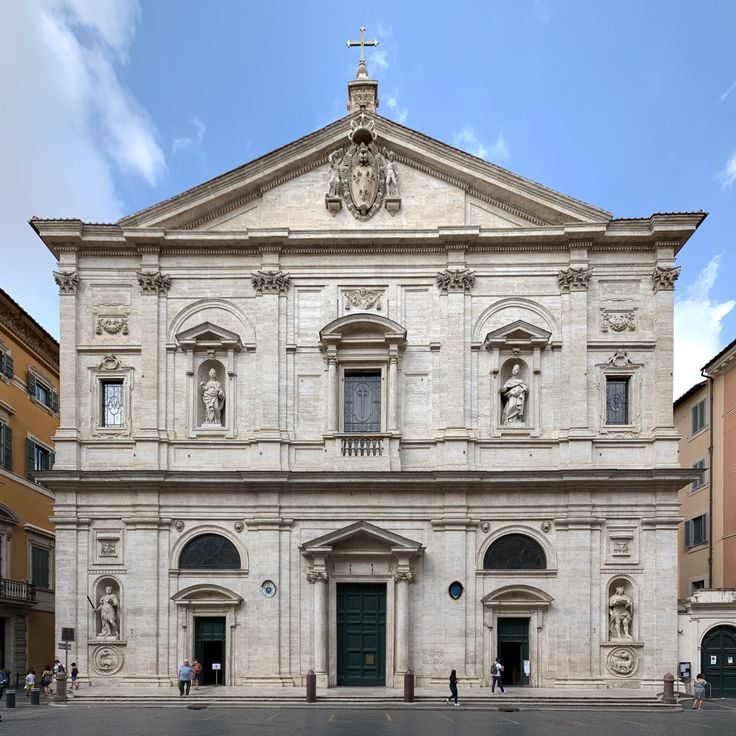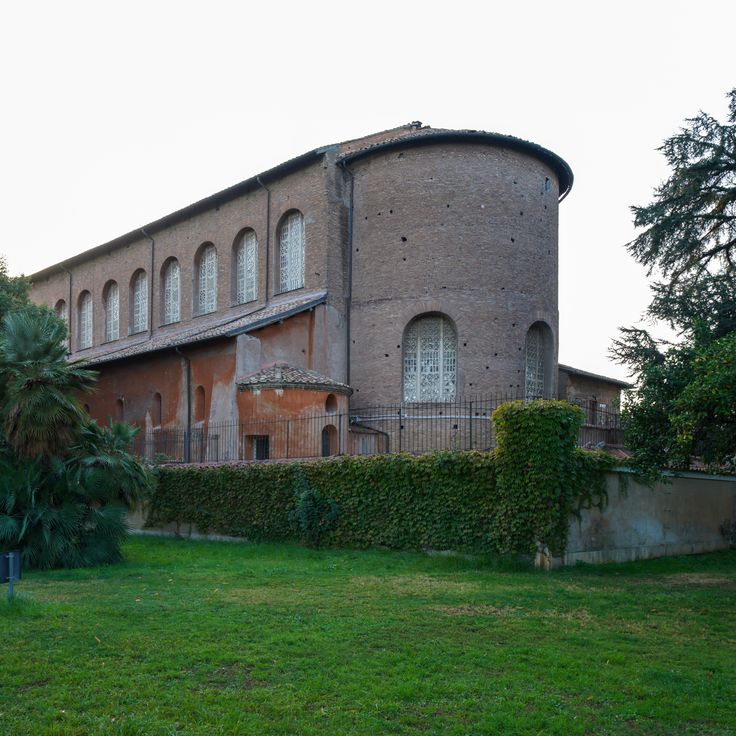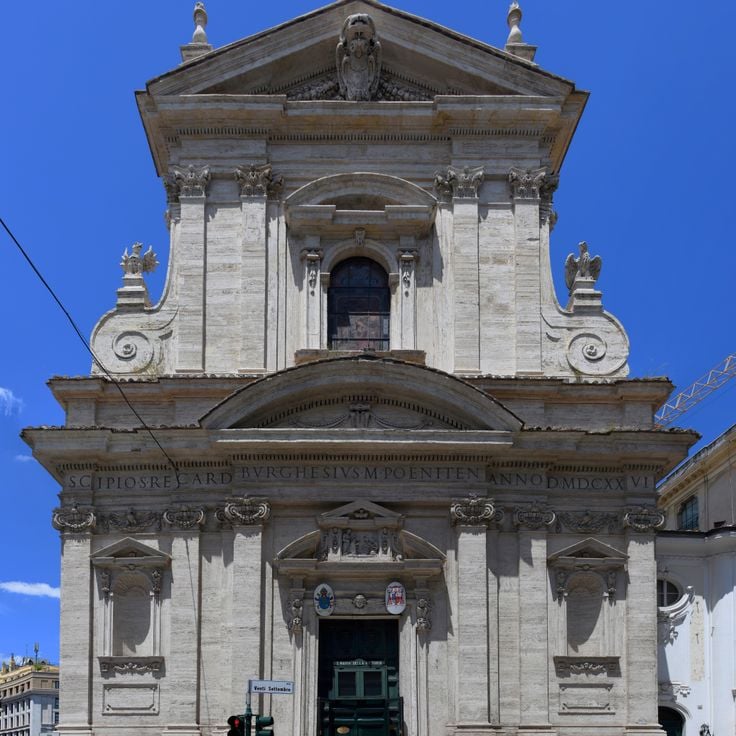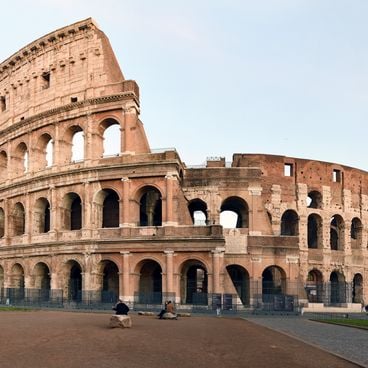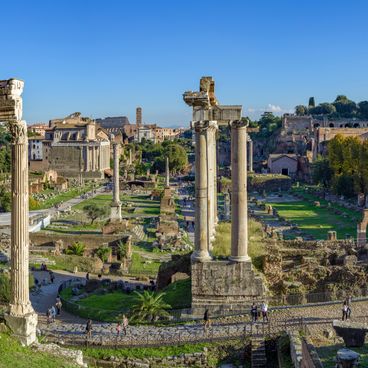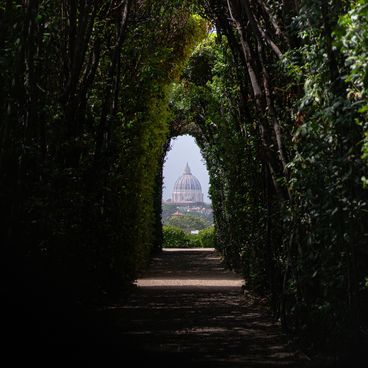Rome contains over 900 churches that demonstrate two thousand years of sacred architecture, from Roman antiquity to the Baroque period. These buildings reveal the evolution of construction techniques and artistic expressions over the centuries. St. Peter's Basilica covers 20,000 square meters and features a dome designed by Michelangelo. The Pantheon retains its Roman dome with a 43-meter (141 feet) diameter, the largest ever constructed in unreinforced concrete. Major basilicas such as Santa Maria Maggiore showcase Byzantine mosaics from the 5th century beneath a Renaissance ceiling with gilded coffers. Saint Clement's Basilica in the Lateran overlays three levels of construction from the 1st to the 12th centuries, illustrating Rome's urban stratification. Santa Maria in Trastevere, one of the city's oldest churches, presents medieval gilded mosaics, while Saint Peter's in Chains houses Michelangelo's Moses. These monuments help understand how Rome shaped European religious architecture for over fifteen centuries.
Saint Peter's Basilica stands at the center of Vatican City and serves as the principal church of Catholic Christianity. The current structure from the 16th and 17th centuries replaces a 4th-century Constantinian basilica. Michelangelo designed the 446-foot (136-meter) dome, while Bernini created the forecourt with its monumental colonnades. The church interior covers approximately 215,000 square feet (20,000 square meters) and displays masterworks by Michelangelo, Bernini, and other Renaissance and Baroque artists. This basilica documents the evolution of Rome's religious architecture over several centuries.
The Pantheon is a 2nd-century Roman temple known for its exceptional dome of unreinforced concrete measuring 142 feet (43.3 meters) in diameter. This ancient structure demonstrates the advanced construction techniques of the Roman Empire and was converted into a church in the 7th century, incorporating it into Rome's collection of religious architecture. The dome remains the largest of its kind ever built without steel reinforcement, documenting the technical mastery of Roman builders two millennia ago.
This papal basilica from the fifth century preserves Byzantine mosaics depicting biblical scenes, along with a gilded coffered ceiling from the sixteenth century. The church documents the development of religious architecture in Rome from early Christianity through the Renaissance. The structure represents one of the significant examples of sacred building that demonstrates how different periods combined their artistic expressions within a single edifice. The basilica provides insights into the craftsmanship techniques and artistic traditions that shaped European religious construction over many centuries.
The Basilica of San Clemente in Lateran documents the urban stratification of Rome over 2000 years through its three levels of construction from the 1st, 4th, and 12th centuries. The medieval church building rests on an early Christian basilica from the 4th century, which in turn was built over a Roman residence from the 1st century. This layering makes the church an exceptional archaeological witness to the development of religious architecture in Rome, from antiquity to the High Middle Ages. The threefold construction stratification allows the study of building techniques and artistic expressions from different periods within a single sacred complex.
The Basilica of Saint John Lateran serves as the cathedral of Rome and functions as the official episcopal seat of the Pope since the 4th century. This major basilica covers approximately 12,000 square meters (about 130,000 square feet) and displays architectural elements from different periods. The baroque facade from the 18th century features 15 monumental statues of Christ, John the Baptist, and Doctors of the Church. The interior preserves the medieval cloister from the 13th century with its decorated columns and the papal altar, where only the Pope may celebrate Mass. The basilica documents the development of Roman church architecture from the Constantinian original structure through the baroque transformations of the 17th century.
This basilica was founded in the 4th century and stands as one of the oldest Christian churches in Rome. The facade displays a medieval mosaic featuring the Virgin Mary and ten female figures. Inside, golden mosaics from the 12th and 13th centuries adorn the apse and depict scenes from the life of Mary. The interior contains 21 ancient granite columns taken from Roman baths. The floor is decorated with 13th-century Cosmatesque work. The gilded coffered ceiling was added in the 17th century. This church documents the development of religious art in Rome over more than ten centuries.
The Basilica of Santa Maria in Ara Coeli stands on the Capitoline Hill at the site of an ancient Roman temple. The 13th-century church features a simple medieval brick facade and houses a Renaissance coffered ceiling with gilded decorations. The interior divides into three naves by 22 ancient columns salvaged from various Roman buildings, displaying different styles and materials. The church preserves frescoes by Pinturicchio from the late 15th century, along with several tombs and sculptures from different periods. A 14th-century staircase of 124 steps connects the basilica to the Piazza del Campidoglio.
The Basilica of San Pietro in Vincoli houses the Moses statue by Michelangelo, one of the most significant works of Renaissance sculpture from the 16th century. This church also preserves the chains believed to have bound Saint Peter during his imprisonment in Jerusalem and Rome. The building dates from the 5th century and was remodeled in the 15th century, maintaining its three-nave basilica structure. The Moses statue was originally intended for the monumental tomb of Pope Julius II and depicts the prophet with distinctive horns, resulting from a medieval mistranslation of the Hebrew text. Beyond the sculpture, the church contains 17th-century frescoes and the tomb of Pope Julius II in simplified form.
The Basilica of Saint Augustine in Campo Marzio combines Renaissance architecture with significant artworks that document the evolution of religious art in Rome. Built between 1479 and 1483, this church features a travertine facade sourced from the Colosseum. Inside, the basilica preserves Caravaggio's Madonna of the Pilgrims from 1604, a work that marks a decisive moment in the transition from Mannerism to Baroque. The church also contains Raphael's fresco of the Prophet Isaiah and Jacopo Sansovino's marble sculpture of the Madonna and Child. This combination of architectural elements and artworks illustrates how Roman churches functioned as centers of artistic innovation during the 15th and 16th centuries.
The Basilica of Santa Prassede preserves 9th-century Byzantine mosaics that rank among the most significant examples of this art form in Rome. The Chapel of Saint Zeno, often called the "Garden of Paradise," displays gold-backed mosaic work covering walls and vault. The apse features Christ flanked by saints against a gold background, while the triumphal arch depicts the Heavenly Jerusalem with apostles and martyrs. The church stands on foundations from the 2nd century and incorporates 16 ancient granite columns from Roman buildings. A relic of the flagellation column, brought from Jerusalem in 1223, rests in a side chapel. The structure demonstrates how Rome adapted Byzantine artistic traditions during the early medieval period, creating a synthesis between Eastern iconographic programs and Western architectural forms.
This church in central Rome serves the French community and houses three paintings by Caravaggio from the early 17th century depicting the life of Saint Matthew. The Contarelli Chapel displays The Calling of Saint Matthew, Saint Matthew and the Angel, and The Martyrdom of Saint Matthew. Built between 1518 and 1589, the church follows a three-aisle basilica plan with side chapels. Its Baroque facade was designed by Giacomo della Porta in 1589. The interior features frescoes by Domenichino in the Chapel of Saint Cecilia and works by French and Italian artists from the 16th and 17th centuries. This church demonstrates the importance of the French presence in Rome during the Counter-Reformation.
The Basilica of Santa Sabina, built in the 5th century, represents one of the best preserved early Christian church structures in Rome. Pope Celestine I commissioned its construction between 422 and 432 on the Aventine Hill, incorporating columns salvaged from an ancient Temple of Juno. The three-nave layout preserves its original spatial configuration with 24 Corinthian columns of Parian marble and windows made from alabaster rather than glass. The main door, crafted from cypress wood, displays 18 surviving wooden panels depicting biblical scenes, including one of the earliest representations of Christ's crucifixion. This basilica demonstrates the transition from Roman secular architecture to Christian sacred buildings and has served as the conventual church of the Dominican Order since 1220.
Sant'Ivo alla Sapienza was built between 1642 and 1660 by Francesco Borromini as the chapel of La Sapienza University. The church displays Borromini's characteristic architecture with a star-shaped floor plan combining two interlocking equilateral triangles. The dome rises above this geometric scheme and is crowned by a spiral lantern extending 59 feet (18 meters). The interior develops vertically with white stucco and uses natural light entering through the dome's windows. This church documents the experimental construction methods of Roman baroque and its influence on 17th-century religious architecture.
The church of Santa Maria della Vittoria houses one of Rome's most significant Baroque sculptural groups: the Ecstasy of Saint Teresa by Gian Lorenzo Bernini. Created between 1647 and 1652 for the Cornaro Chapel, this marble composition depicts the Spanish mystic in a moment of spiritual rapture. Bernini combined sculpture, architecture, and natural light to create a theatrical setting that represents a high point of Baroque sacred art. The church itself was built between 1608 and 1620 following designs by Carlo Maderno.
Santa Maria sopra Minerva stands on the foundations of an ancient temple of Minerva and represents Rome's only Gothic church, featuring pointed ribbed vaults from the 13th century. The nave contains 15th-century frescoes by Filippino Lippi in the Carafa Chapel and Michelangelo's Risen Christ from 1521. Blue star vaults in the choir were added during the 19th century. The body of Saint Catherine of Siena rests beneath the high altar. In front of the facade stands an elephant by Gian Lorenzo Bernini from 1667, carrying a 6th-century BC Egyptian obelisk.
This basilica dates from the fifth century and underwent extensive renovations during the twelfth century, preserving ancient Roman columns from earlier periods. San Lorenzo in Lucina rises above an early Christian foundation attributed to the time of Pope Sixtus III. During the twelfth century, the church received its medieval configuration with a Romanesque bell tower and portico, while the interior retains ancient granite columns from the original structure that continue to separate the arcades. The building documents the reuse of Roman construction materials in medieval architecture and demonstrates how Christian churches were built upon older foundations.
The church of Santa Cecilia in Trastevere stands above the remains of a 3rd-century Roman house traditionally believed to have belonged to Saint Cecilia. The building preserves a 9th-century Byzantine apse mosaic depicting Christ with saints. The crypt reveals Roman structural remains and medieval frescoes. Stefano Maderno's marble statue of Saint Cecilia from 1600 lies beneath the main altar, depicting the martyr in the position her body was found in 1599. Pietro Cavallini's late 13th-century fresco of the Last Judgment, one of the most significant examples of Roman painting from that period, decorates the choir nun's wall and is accessible by appointment.
The San Gregorio Magno al Celio complex dates to the 6th century and was built on the site of a former Roman estate. The complex includes three chapels, a cloister, and a garden. This church documents the development of early Christian architecture in Rome and shows the transformation of private Roman residences into religious sites. The three chapels preserve frescoes and architectural elements from different periods and illustrate the continuous use of sacred spaces over fifteen centuries. This church complex adds to the understanding of Roman religious architecture through its layered construction history.
